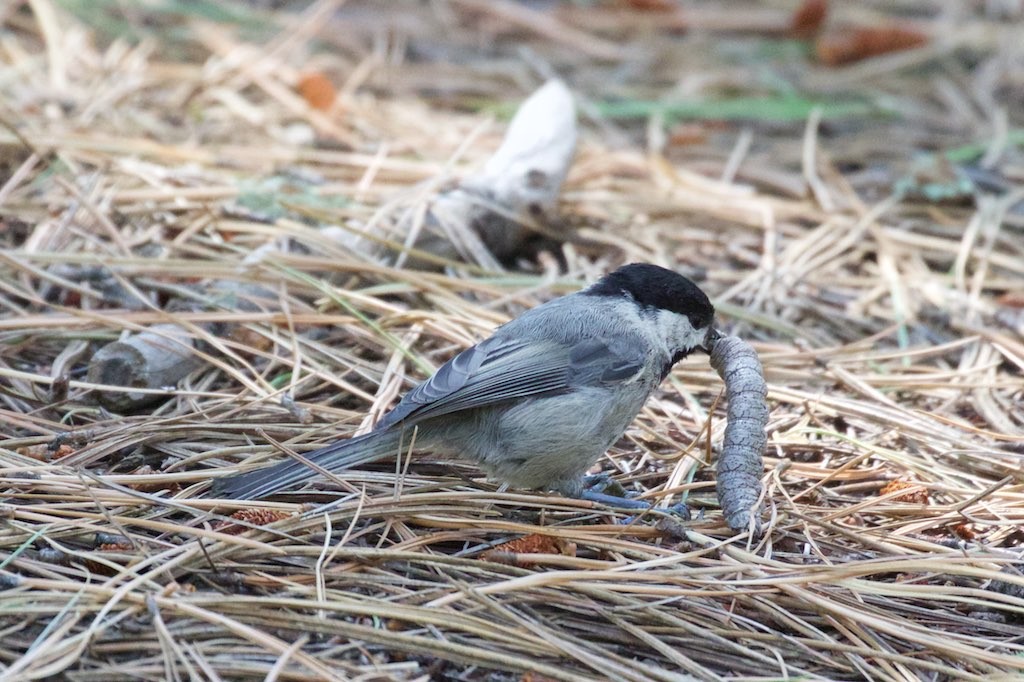Mexican Chickadee
A species of Chickadees and allies Scientific name : Poecile sclateri Genus : Chickadees and allies
Mexican Chickadee, A species of Chickadees and allies
Botanical name: Poecile sclateri
Genus: Chickadees and allies
Content
Description General Info
Description
The Mexican chickadee (Poecile sclateri) is a small songbird, a passerine bird in the tit family Paridae. It is still often placed in the genus Parus with most other tits, but mtDNA cytochrome b sequence data and morphology suggest that separating Poecile more adequately expresses these birds' relationships (Gill et al., 2005). The American Ornithologists' Union had been treating Poecile as distinct genus for some time already. Adults are 12.5–13.5 cm long with a wingspan of 18–21 cm and a weight of 7.5–11 g. Both sexes have a black cap, white cheeks, and a short black bill. Their backs and flanks are gray and they have paler grayish underparts. Similar in appearance to the black-capped chickadee and mountain chickadee, the Mexican chickadee can be distinguished by its longer black bib, which extends from its chin down onto its upper breast. A whitish band below the bib extends down the center of the belly. It is a permanent resident of wooded highlands in western, central and northeastern Mexico, the range extends north into extreme southeastern Arizona and southwestern New Mexico. Although primarily nonmigratory, Mexican chickadees sometimes fly to lower elevations during the cold of winter. The Mexican chickadee's song is distinct from other chickadees; it is a complex burry trilled whistle of chischu-wur and a rich cheelee. They travel in pairs or small groups, and may join multi-species feeding flocks. The nest is constructed by the female in a snag or tree cavity up to 18 m above the ground, and consists of grasses, moss, strips of bark, and is lined with animal fur. She lays between five and eight ovate white eggs, marked with fine reddish brown spots. Their breeding biology is not well known, but it is estimated that eggs are incubated for 11–14 days by the female, and the altricial young fledge in 18–21 days. 
Size
13 cm (5 in)
Life Expectancy
0.6-10 years
Nest Placement
Cavity
Feeding Habits
Mexican Chickadee primarily feeds on insects, supplemented by seeds. Its foraging involves searching crevices and foliage. Unique adaptations allow efficient extraction of prey and seed handling.
Habitat
Conifers in mountains
Nest Behavior
The breeding behavior of mexican Chickadee includes utilizing natural cavities or nest boxes, with females building the nest. Egg-laying patterns and parental care specifics are not well-documented.
Nest Characteristics
Mexican Chickadee's nests are typically found in tree holes, ranging from 10-40 feet above ground but can be lower in stumps. Made with bark fibers and moss, lined with softer materials including animal hair.
Dite type
Granivorous
General Info
Feeding Habits
Bird food type
Bird Feeder Type

Small Hopper

Small Tube Feeder
Sounds
Call
Recording location: Mexico
Song
Recording location: Mexico
Song
Recording location: Mexico
Species Status
Not globally threatened.
Scientific Classification
Phylum
Chordates Class
Birds Order
Perching birds Family
Tits Genus
Chickadees and allies Species
Mexican Chickadee 